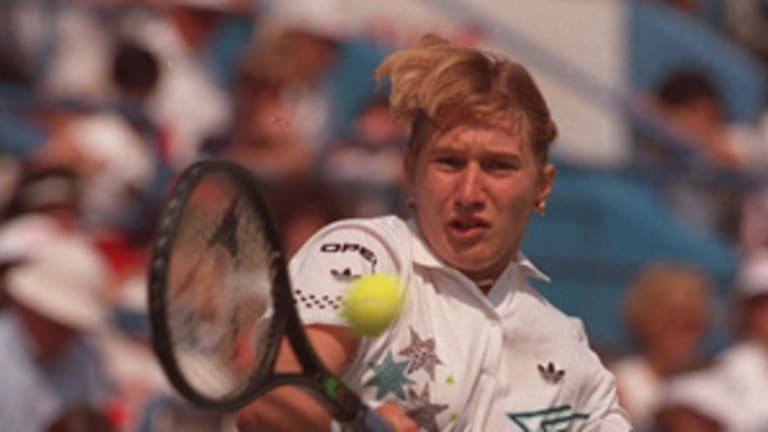This year marks the 50th anniversary of TENNIS Magazine's founding in 1965. To commemorate the occasion, we'll look back each Thursday at one of the 50 moments that have defined the last half-century in our sport.
The 1970s was the decade of the pro-tour invasion. In those days the momentum was with the ever-expanding circuits; they were played in modern arenas for big money, and had hopes of competing with the world’s major team sports. The Grand Slams, by comparison, were still played in creaky private clubs built in the early years of the century, and were run by the game’s even creakier old amateur guard. The majors looked like a relic from tennis’s fast-vanishing past.
Nowhere was this more true than at Melbourne’s Kooyong Stadium, site of the least-grand of the Slams at the time, the Australian Open. By the early 70s, the sun was setting on that country’s 20-year run of dominance; the stars that took the Aussies’ place were from almost exclusively from the U.S., Europe, and South America, and they were happy to avoid what was then a late-season trip Down Under (the tournament was played in December for much of the 70s and 80s). Bjorn Borg played the Aussie Open in 1974 and never went back; Jimmy Connors made the trip twice, in ’74 and ’75; Chris Evert and Martina Navratilova each made one appearance in the mid-70s, before skipping it until the early 80s. Not only was the Aussie Open in an inconvenient location, at an inconvenient time of year, the main court at Kooyong had an inconvenient incline at one end.
By the 80s, though, the old guard had weathered the professional storm and was prepared for a counterattack. World Team Tennis, the biggest threat to the game’s traditional calendar, and the majors’ place at the heart of it, had folded in 1978. That same year, the US Open moved from the overcrowded West Side Tennis Club in Forest Hills to a much larger public facility, and a new court surface, at Flushing Meadows. The French Open, led by longtime amateur official Philippe Chatrier, began a revamp and expansion; perhaps its most beloved court, the Bullring, opened in 1981. That year Wimbledon had been put into crisis mode by the “You cannot be serious!” antics of John McEnroe; there were rumblings from the top players that they could live without the tournament and its increasingly outdated grass courts. Change came slowly at Wimbledon, but it eventually came, as the famously authoritarian event began to cultivate a friendlier relationship with its players.
That left Australia out in the cold; or, perhaps more accurately, on the dark side of the moon. As the 80s started, some top players began to trickle back Down Under. The prestige of the Slams was being restored, and, appearances to the contrary, the Aussie Open did still qualify as a Slam. Navratilova returned in 1980, Evert in ’81, and three top-ranked men—McEnroe, Ivan Lendl, and Mats Wilander—showed up at Kooyong in 1983. But the club’s good fortune proved to be its undoing. The crowds that those players drew helped convince the ITF that a new facility was needed to house the tournament.

